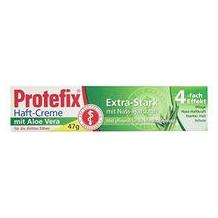Water flosser purchasing advice: how to choose the right product
- What you need to know
- Oral irrigators are a useful addition to daily oral and dental hygiene, especially for people with fixed braces, crowns, bridges or implants.
- A powerful fine water jet removes deposits from hard-to-reach areas in the mouth and throat.
- Cleaning teeth with a good oral irrigator is uncomplicated and fast.
- Stationary oral irrigators with lightweight handpieces and large water tanks offer a high level of user comfort. Portable models are ideal for frequent travel.
- To be able to adjust the intensity of the water jet, models with different pressure levels from 0.6 to 6.0 bar are recommended.
Clean teeth all round
The spaces between the teeth are a problem zone for many people. Even when brushing thoroughly with an electric toothbrush, not all food debris can be removed from them. Therefore, the use of dental floss or interdental brushes is an important part of oral and dental hygiene. Otherwise, bacteria and plaque will settle between the teeth. The latter gradually develops into tartar, which can lead to gum disease such as periodontal disease and, in the worst case, tooth loss. In addition, several studies show that inflammation in the oral cavity increases the risk of general diseases such as strokes or heart attacks.
A useful addition to daily oral and dental hygiene is an oral irrigator. Many consumers are familiar with this device from visits to the dentist; in the meantime, some manufacturers also offer the toothbrushing aids for private use. Mouthwashers look similar to electric toothbrushes, but instead of a brush head, they have a narrow, curved nozzle that allows you to target the interdental spaces and other hard-to-reach areas of the mouth and throat. So oral irrigators clean where toothbrushes and dental floss reach their limits.
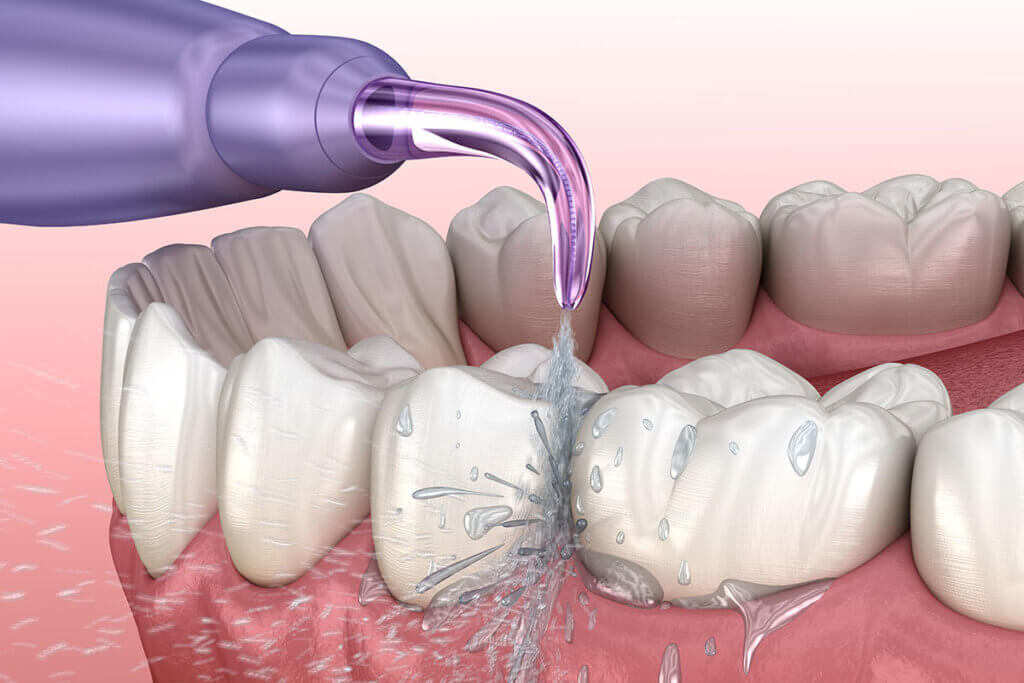
How do oral showers work?
Mouthwashers are supplied with water via a connected tank. Users simply hold the nozzle in their mouth and press the on button on the handpiece. At the touch of a button, the oral irrigator uses an electric pump to generate a powerful jet of water that you aim at the areas of the mouth you want to clean. The fine water jet loosens plaque from between the teeth, under the tartar line and under fixed braces, crowns, bridges and implants. With many models, you can adjust the pressure of the water jet and rinse your teeth with a gentler water jet, for example.
Caution with gingivitis
Anyone suffering from acute inflammation of the gums should not use an oral irrigator without first seeking the advice of a dentist. If you have gum disease, there is a risk that the water jet will flush bacteria deeper into the gum pockets, leading to painful infections in the worst case.
Mouthwash or dental floss?
You may be wondering whether it is better to floss or use an oral irrigator. Actually, this question does not arise at all, because the oral irrigator is not an alternative to dental floss or an interdental brush, but rather a supplement. An oral irrigator cannot replace the scrubbing action of dental floss, which removes plaque and tartar. But the water jet frees even hard-to-reach areas from deposits. Especially for people with braces, bridges, implants, crowns or temporaries, an oral irrigator is recommended as a supplement to daily oral and dental hygiene. For people who can’t handle flossing or find it too time-consuming to use, the oral irrigator may be a quick, uncomplicated alternative.
Different types of oral irrigators
Oral irrigators can be divided into stationary and portable models. On the other hand, there are single-jet and multi-jet models.
Stationary and portable oral irrigators
In stationary oral irrigators, also called dental centres, the water tank is connected to the handpiece via a hose, while in portable models it is located directly on the handpiece. Dental centres have a large water tank and can be used for a comparatively long time with one filling. The station with the tank is connected to the power supply via a mains plug and also serves as a charging station for the oral irrigator. In addition, the handpiece is more compact and lighter than portable versions. However, the connecting hose restricts freedom of movement. You are more mobile with a portable oral irrigator, which is also called a travel oral irrigator. However, you will be holding a heavier weight in your hand during cleaning and you will have to refill the water in between longer applications.
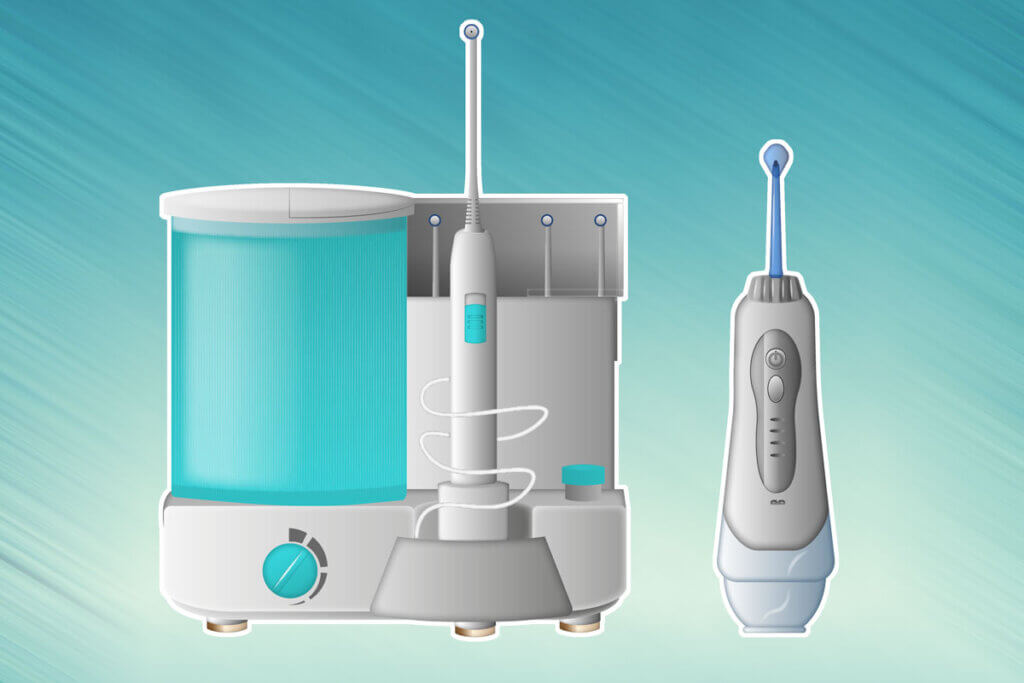
Stationary models are recommended for consumers who use their oral irrigator exclusively in the bathroom. Some dental centres include an electric toothbrush in addition to the oral irrigator. Popular stationary models are, for example, the Waterjet and the Oxyjet from Braun Oral-B as well as the Waterpik oral irrigators. Those who travel a lot, on the other hand, are better off with a portable version. These are available from Philips and Panasonic, among others. There are also portable oral irrigators without a tank that you connect to the tap. With these models, you benefit from an endless supply of water, but you have to mount the oral irrigator for each use.
Single-jet and multi-jet oral irrigators
Classic oral irrigators are single-jet models, also known as single-jet or mono oral irrigators. They enable targeted, thorough cleaning. The strength of the water jet can be regulated in stages.
Multi-jet oral irrigators, on the other hand, work less precisely and do not clean the interdental spaces quite as thoroughly. On the other hand, multiple water jets stimulate the blood flow to the gums and have a pleasant massage effect. In addition, they clean a larger area and thus more quickly and gently. Some oral irrigators offer the option of switching between one and several water jets – ideal for users who do not want to choose between the two options.
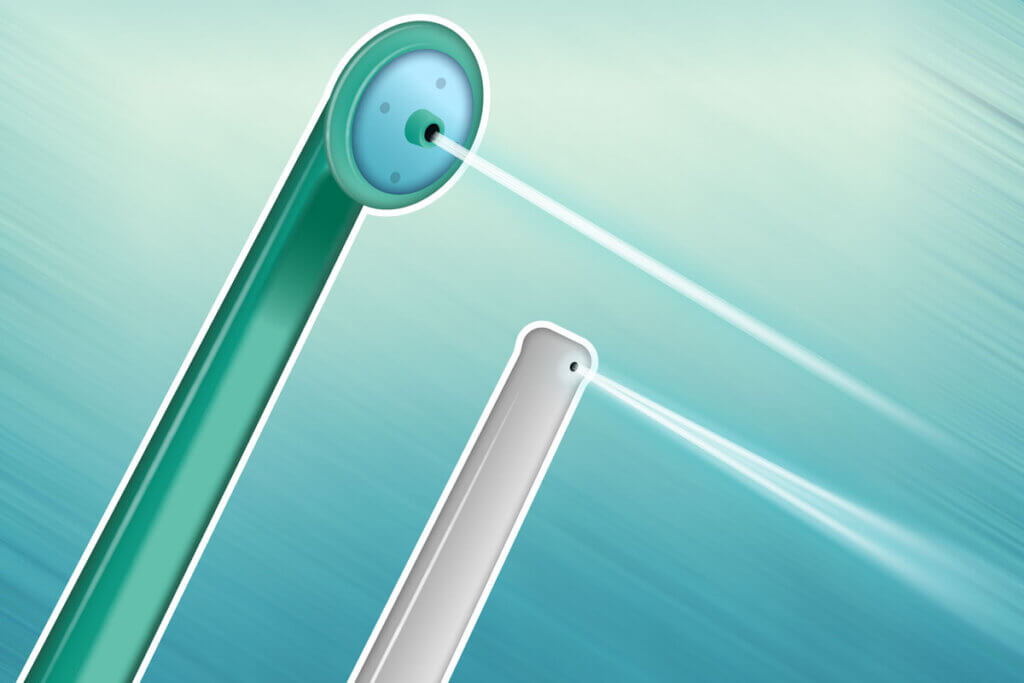
Finding the right oral irrigator
The water pressure is particularly important when choosing an oral irrigator. It is responsible for the cleaning performance. Other criteria you should consider before buying are the pump power, the water tank size and the power supply. A good oral irrigator is also comfortable and easy to use. Some models include practical accessories in the scope of delivery.
Precision and strength of the water jet
For thorough cleaning, the oral irrigator must produce a powerful water jet. However, the pressure should not be so strong that it hurts sensitive gums or feels uncomfortable. Ideally, the oral irrigator offers different settings for a gentle to powerful jet so that you can adjust the pressure. This gives you the option to start gently to get used to the sensation and gradually increase the pressure. A pressure between 0.6 and 6.0 bar is recommended. Depending on the model, this can be adjusted gradually or continuously. Most models come with three to ten different intensity levels.
Pump power
The pumping power is responsible for how powerful the water jet is. In stationary oral irrigators, the pump is built into the station and can therefore be larger than in portable models. Stationary oral irrigators therefore usually have a higher pump capacity than portable models and can therefore produce a more powerful jet. Some inexpensive oral irrigators come with a manual pump instead of an electric pump, which you operate using a pump button. The performance of such models is significantly lower compared to oral irrigators with an electric pump. Mouthwashers without a water tank, which are connected directly to the water tap, do not contain a pump. The amount of water pressure depends on the pressure of the water pipe used.
Capacity of the water tank
A large water tank makes it possible to use the oral irrigator for longer without having to refill water in between. Generally, dental centres have a larger water tank than portable oral irrigators. In the former, it often holds between 500 and 600 millilitres, while the water tank of portable models is limited to 100 to 150 millilitres. However, this is usually enough for one rinse. You get an unlimited water supply with oral irrigators connected to the tap. Regardless of the capacity, you should make sure that the water tank is easy to fill and clean. Ideally, it should be removable.

Can the water tank be filled with mouthwash?
For a fresh taste and an antibacterial effect, some oral irrigators can be filled with mouthwash or a mouth rinse. Not all models are suitable for this due to the sensitive material. Be sure to follow the manufacturer’s warnings to avoid damaging your appliance. As a general rule, you should never fill the water tank of your mouthwash exclusively with mouthwash, but always mix it with water. Undiluted mouthwash is very sharp and can irritate sensitive areas of the gums. The manufacturer Waterpik, for example, states that the ratio of mouthwash to water must not exceed 1:1.
Power supply
Stationary oral irrigators are usually equipped with a power supply unit, which you use to connect the station to the power supply. The handpiece itself has a rechargeable battery; to charge the battery, plug it into the charging station next to the water tank. Portable oral irrigators, on the other hand, are available with different charging options. Some models come with a clip-on charging station, while others allow the battery to be charged inductively. Portable oral irrigators are practical because the charging cable is plugged directly into the handpiece. You can use these as needed during the charging process. Since using an oral irrigator takes no longer than two minutes, the battery capacity is negligible.
Handling
The handpieces of stationary oral irrigators are much lighter and more compact than portable versions with an integrated water tank. However, the connecting hose between the water tank and the handpiece restricts freedom of movement. Nevertheless, many users find the handling of a stationary oral irrigator more comfortable.
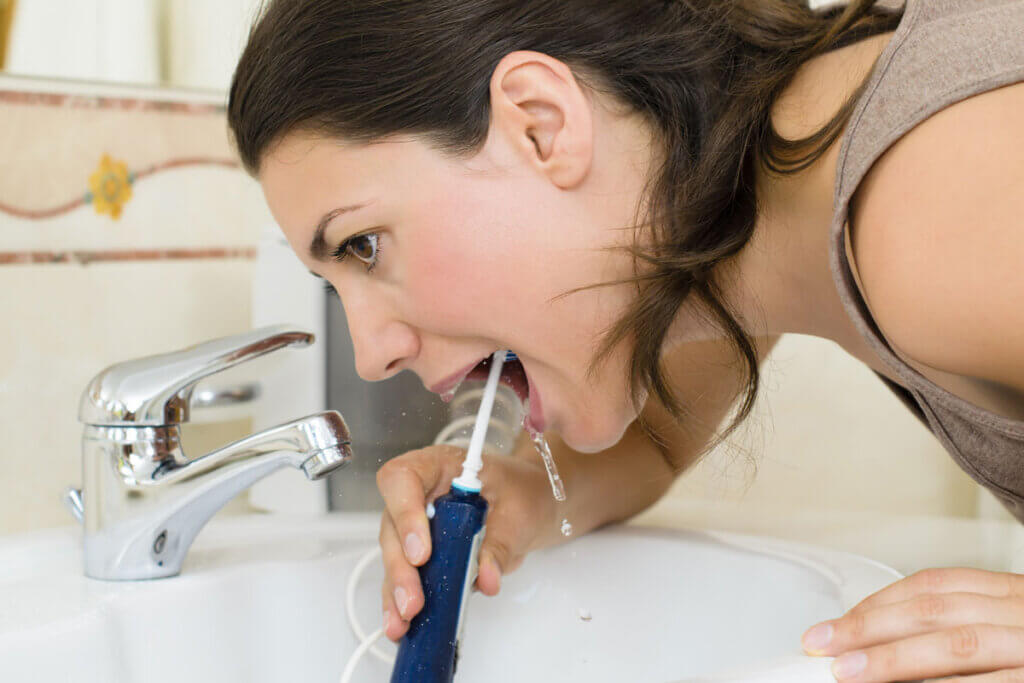
Ideally, the handle of the handpiece is ergonomically shaped and lies well in the hand. In addition, the controls on the handpiece should be easy to reach. These are usually a switch-on button and a rotary or slider control for adjusting the water jet strength. The nozzle of most models is narrow and curved to reach all parts of the mouth. Nozzles that can be rotated 360 degrees further simplify use. A two-minute timer helps you to keep to the recommended cleaning time.
Scope of delivery
The scope of delivery for inexpensive oral irrigators is often limited to the handpiece, the water tank, a charging cable and up to three replacement nozzles. Many portable oral irrigators also include a practical travel pouch. Dental centres are often equipped with various accessories, such as a storage container for the attachments and various replacement nozzles. The Waterpik WP-660EU model, for example, includes seven cleaning attachments:
- Three classic nozzle attachments for general use
- One orthodontic nozzle with a conical tip for braces wearers
- A subgingival nozzle with a soft rubber tip for use on tooth pockets
- A toothbrush attachment for rinsing and brushing at the same time
- A plaque-seeker nozzle with three strands of bristles for extra thorough plaque removal
Some dental centres, such as a Braun Oral-B model, include an electric toothbrush in addition to the oral irrigator. However, these are among the most expensive devices.
Tips for use
If used correctly, the oral irrigator is a useful addition to daily dental and oral hygiene with a toothbrush and dental floss. In the following, we explain what you should pay attention to when using the oral irrigator, how best to proceed and how to clean it properly.
Mouthwashers for children?
Small children should not use an oral irrigator. The intensity of the water jet is too high for their sensitive gums. There is also an increased risk of user error. The manufacturer Waterpik recommends its oral irrigators for children over the age of six.
General instructions for use
For clean interdental spaces, you should use the oral irrigator twice a day as a final step in your toothbrushing routine, i.e. after brushing and flossing. The best way to do this is to bend over a sink to let the water run off. For beginners, the feeling of the water jet on the gums is unfamiliar at first. It is best to start with a low pressure and gradually increase it. This way, your gums can slowly get used to the chosen setting. Despite regular use of an oral irrigator, you should not forego professional tooth cleaning at the dentist.
The correct use in 6 steps
- Fill the tank with lukewarm water
- Attach the appropriate attachment
- Hold the nozzle horizontally against the tooth
- Select low intensity level and switch on
- Aim nozzle at interdental space for about two seconds
- Switch to the next interdental space
How do I clean the oral irrigator?
Thorough cleaning of the oral irrigator is not only necessary for the durability of your oral irrigator, but also for your oral hygiene. After each use, rinse the nozzle, the hose and the water tank and dry the components well to prevent mould from forming. You can hang the hose over the towel rail, for example, so that it can drip off. About once or twice a month, you should also remove limescale from all the components of your oral irrigator and disinfect them. To do this, use either special cleaning agents from the manufacturer or home remedies such as citric acid with warm water. Vinegar is rather unsuitable because of the stubborn taste residues. Conventional descaling agents containing chemicals should be avoided at all costs, as in the worst case they can cause burns to the mucous membranes of the mouth and damage the oral irrigator.
The water tank and mouthpiece can be disinfected in one go by filling the water tank with warm water and a special disinfectant powder and placing the mouthpiece inside. After an exposure time that you will find in the manufacturer’s instructions, rinse the mouthpiece and water tank thoroughly – and the oral irrigator is ready for use again.

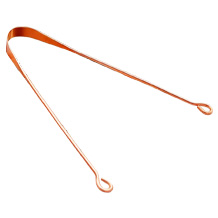
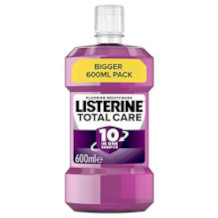
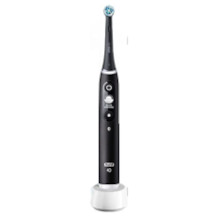
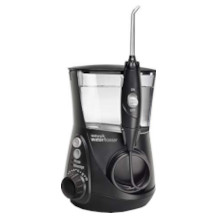
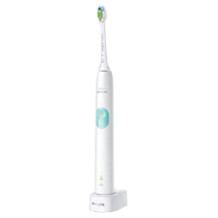





 no reviews
no reviews
